#bay of biscay
Explore tagged Tumblr posts
Text

The furious action between H.M.S. Mars and the French '74 Hercule off Brest on 21st April 1798
by John Christian Schetky
#john christian schetky#art#battle of the raz de sein#duel#age of sail#marine art#royal navy#england#great britain#france#history#europe#french revolutionary wars#hercule#hms mars#naval battle#naval warfare#alexander hood#louis lhéritier#english#british#french#bay of biscay#warship#warships#ships#clouds#moonlight#moonlit#sea
50 notes
·
View notes
Photo
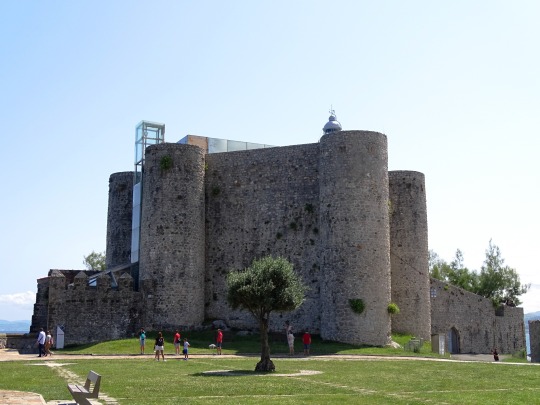

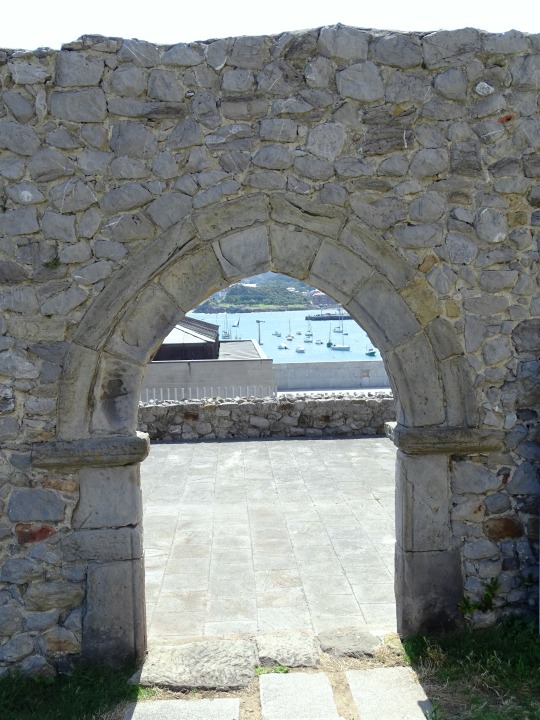

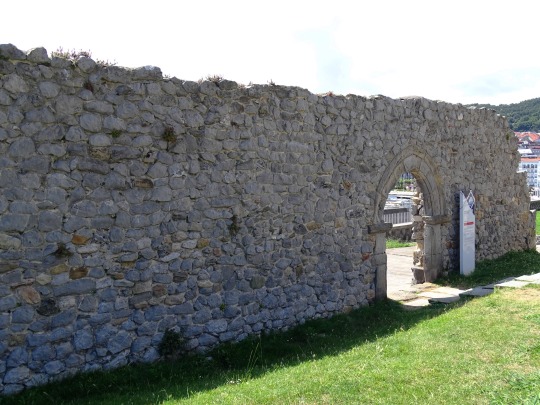
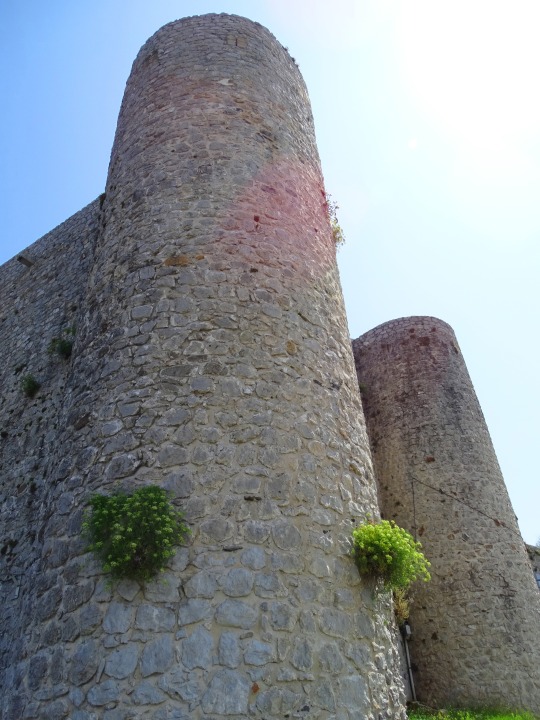
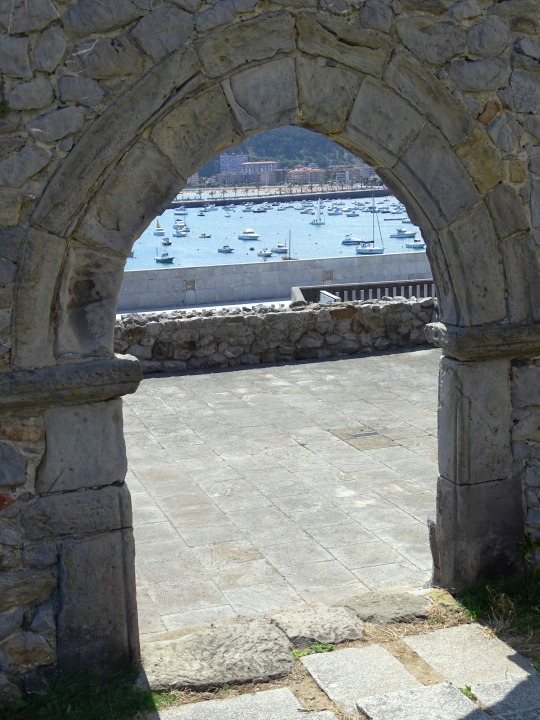

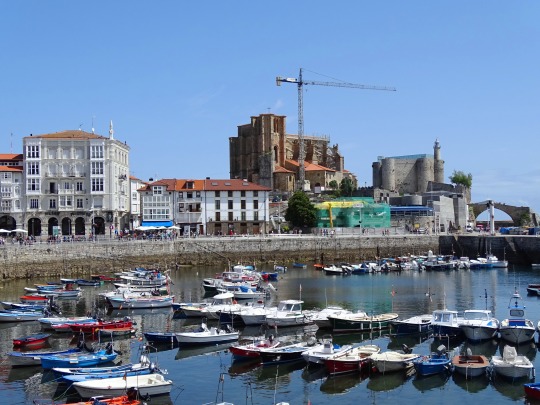
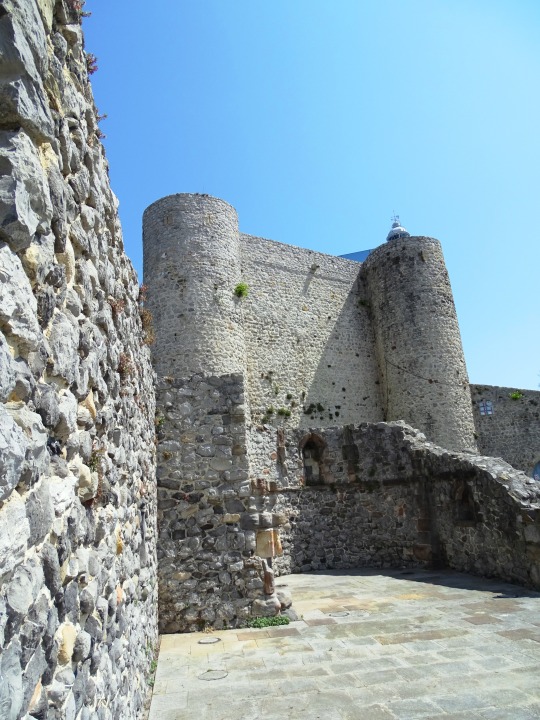
Castle of Santa Ana, Castro Urdiales (No. 1)
The castle of Santa Ana is a fortress located on a rocky promontory in Castro-Urdiales, on a peninsula where there is also the fortified church Sta. Mª de la Asunción (xiii century), the ruins of another previous church (that of San Pedro, from the xii century), and the hermitage of Santa Ana, built as a watchtower, linked to the castle by a bridge. The complex has very good views of the sea, the port and the town. A lighthouse was built inside the enclosure in 1853, whose machinery occupied the chapel. It is one of the best preserved castles in northern Spain.
It has a pentagonal floor plan with cylindrical corner towers 15 meters high, which protect a rectangular enclosure of 22.75 x 12.35 meters; Inside this, in turn, there is a hall of 17 x 7 m covered by a barrel vault. One of the cylinders is actually covering a triangular space that advances from the inner rectangle towards the villa, while the other four act as buttresses of the vault of the living space. Another defense, crenellated and lower, is visible in the part of the lighthouse. It completely lacks gaps, so that the defense could only be done from the towers. The factory is made of cyclopean stones taken with lime. The castle, as well as the citadel, was protected by a wall between 6 and 7 meters high, which preserves a small canvas very deteriorated with the original battlements and merlons.
The access is located on the sea side, through a small door.
It is not known for sure when the castle was founded, speculating that the beginning of the works could coincide with the foundation of the town; However, the founding charter has not reached us. A defensive structure probably existed even earlier.
The current building began its construction in the twelfth century, undergoing various modifications and additions and being abandoned in the sixteenth century.
During a restoration in the twentieth century the lighthouse keeper's house, built inside the enclosure, was demolished. Along with all of Puebla Vieja de Castro-Urdiales, it was declared a historic-artistic site in 1978.
Source: WIkipedia
#Castle of Santa Ana#Castillo de Santa Ana#Faro del castillo de Santa Ana#Santa Ana Castle Lighthouse#Ruinas de Iglesia de San Pedro#España#Ruins of the Church of San Pedro#marina#port#Castro Urdiales#Spain#Bay of Biscay#Cantabric coast#Cantabria#architecture#archaeology#cityscape#tourist attraction#landmark#summer 2021#vacation#Northern Spain#Southern Europe
61 notes
·
View notes
Text
El Cañavera
FV El Cañavera sunk; 4 rescued #spain #fishing #foundered #shipwreck

View On WordPress
2 notes
·
View notes
Text

Biarritz. La Villa Belza.
#biarritz#villa belza#1960s#Bay of Biscay#atlantic coast#Pyrénées-Atlantiques department#Nouvelle-Aquitaine region
6 notes
·
View notes
Text
Tibetan Sand Mandalas
Tibetan Sand Mandalas are intricate and colourful designs made with sand that represent the palace of a Buddha or a bodhisattva. They are usually destroyed after completion to symbolize impermanence.
This life once saw sand art in San Sebastian, Spain. It was sleeping on the street at the time. It had taken to drifting from bench to bench throughout the northern Spanish coastline. Its journey had developed this way after having had its belongings stolen from it whilst asleep on a beach bench in Barcelona. It had drifted and drifted and simply ended up on the Spanish north coast. The sand art at San Sebastian had been intricate and very meticulously designed. It had represented a castle or a dreamscape castle with winding pathways leading up to its fortified palace doors. Once the watchers and photo takers had paid their respects to the slowly carved sand art the waters of the Bay of Biscay would seep up and over the built sand structures. Before much time had passed they were reduced to their natural grain state. The artists of the sand art would return the following morning and begin their craft of redesigning their sand art. This life does not know, because it never did ask, if the impermanence of the art pieces represented or were in homage to Tibetan Sand Mandalas. It is very possible they were because without our knowing we continue upon our life journey in representation of the impermanence of what this present living is.
2 notes
·
View notes
Text








Albert Dros: Stormy Skies and Big Waves in the Basque Country, Spain
#albert dros#landscape photography#photography#basque country#euskadi#spain#españa#coastal#coastal spain#bay of biscay
1 note
·
View note
Text
The Bay of Biscay

View On WordPress
0 notes
Link
In this study, the authors examined logbooks from trawl surveys, commercial vessels, and tagging surveys dating from 1983 to 2011 in the Bay of Biscay (northern Spain and western France) for catch records of Hexanchus griseus. This bay is defined by an extensive continental shelf along western France, and a much steeper, narrower shelf around Spain.

In this image, we can see locations of the catches. Red dots are from trawl surveys and the yellow rhombus’ are from electronic logbooks of longline vessels.
The purpose of this study was to examine all existing data of H. griseus in this area to better understand the shark’s ecology, distribution, seasonality, and swimming behavior.
According to the e-logs, most of the sharks caught were from NW Spain during autumn and winter months. Catch depth ranged from 100m to 1750m and weight of captured specimens was estimated to be between 50kg to 600kg. This weight data can be turned into a TL estimate through a developed formula (W = a*TL^b), and the range was 2 meters to 4.5 meters total length.

When examining the trawling surveys, however, most of the individuals were 60cm to 121cm TL; neonates and juveniles. This fascinating dichotomy has a couple explanations. It could mean that H. griseus is spatially segregated by age, with younger sharks occupying shallower waters and older sharks occupying deeper waters. Another explanation could be that larger sharks are better able to escape a trawl net than smaller sharks. This bias could not be ruled out. Larger sharks are faster and better able to evade threats than their smaller relatives.
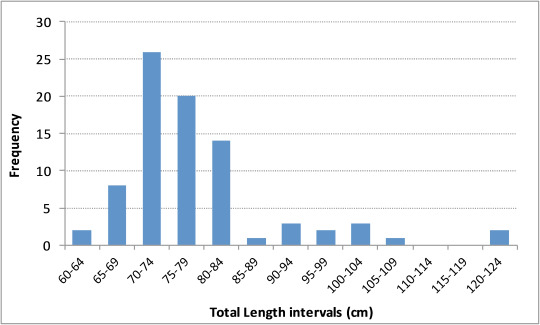
Most of the large sharks were caught by longline and gillnet vessels, with the gear hovering about 2.5m-10m above the sea floor. All this bearing in mind, it aligns with many other similar studies of H. griseus. This shark occupies and epibenthic space where smaller specimens stay in shallower waters and larger sharks occupy deeper waters. No sex relationship could be discerned, as much of that data was not recorded. But based on other studies, we also know that H. griseus tends to segregate by sex, as well, post-maturation.

Above is a map showing the locations of two tagged sharks caught via longline tagging survey. Shark 1 was equipped with a rototag and was recovered 3 years after tagging by a gillnet vessel 9nm away, outside the Marine Protected Area (MPA). The shark was released after catch, but no morphometric data was recorded beforehand, sadly.
Shark 2′s story is far more interesting, and will take up the bulk of this discussion. Shark 2 was equipped with an MPAT tag--a satellite tag that records depth and temperature over time before releasing itself and floating to the surface for recovery and dissemination--and the data recorded gives us a lot to work with. The tag itself was released prematurely after just 84 days. This was due to a contingency designed in the event that depth measurements do not significantly change after a nine day period. Thus, 75 days of valid data were recorded.
The tag released only 4nm (nautical miles) from the equipment location. the last 7 days of the tags data showed a constant depth, suggesting that the shark died and was resting on the sea floor. Some oscillating depth variation was displayed, but that was due to the tides. You may be wondering what killed Shark 2, and the answer is unclear. The authors speculate that physiological trauma from the catch was responsible; citing gas bubble formations in the tissues. This is not an unreasonable inference. Hexanchus griseus has, historically, displayed a recovery period after catch lasting up to 72 hours, wherein erratic behavior is suggested by depth over time recordings.
It is possible that Shark 2 suffered for much longer, however. We do see this erratic behavior in the graph, below, but other natural causes are also possible. Parasites, disease, and predation could also be to blame, other than fatigue.

Figure A shows the recovery period, and Figure B shows the moment of death. Examining the whole, though, we can see that Shark 2 returned to a depth of 900m-1000m after stabilizing. The oscillations could be from the shark getting pushed around by tidal currents, or it could be an active swimming pattern or foraging up and down the slopes.
This data provides an interesting contrast to studies performed on H. griseus around Hawaii and Virginia, where the sharks occupied shallower waters (200m-450m) and displayed more movement. That’s more than double the daily depth variation on display with Shark 2 (note: for the uninitiated, H. griseus occupies shallower waters at night, then makes a vertical migration at dawn to deeper waters for the day, and at dusk returns to shallow waters). Those waters are poorer, however, which would necessitate greater foraging effort. The Cantabrian Sea is a biologically rich area of the ocean, so H. griseus’ ranging in the Bay of Biscay likely do not require such activity for sustenance.
Despite all this, this is a case study of a presumed dead shark. We cannot assert any pattern of behavior from it.
While H. griseus is found most commonly along continental slopes, they have been seen around islands and sea mounts, such as the juvenile spotted SE of Rapa Nui a few years ago, suggesting that this species is capable of long-range migration. Younger individuals, however, tend to remain in a relatively small area, as is the case in Puget Sound, a highly productive estuary and nursery for this species. Young H. griseus spends around four years developing in the Sound before leaving for the open ocean. It is likely that the sharks living in the Cantabrian sea do not migrate very far, as inferred by Sharks 1 and 2 being tagged and recovered in and around the MPA.
An interesting anomaly I learned while reading is that H. griseus can survive in temperatures as high at 20 degrees Celsius, but appear to prefer 8-13 degrees.
One of the things I drew from this study is how our actions affect the life we study. By dragging Shark 2 up from 1km beneath the surface to tag it, the researchers may very well have been responsible for its death. With the current state of ROV technology, perhaps we can avoid these fatalities and disruptions by tagging and observing Hexanchus griseus remotely, without hoisting them from the sea. We must account for the effect of our physical interactions with the subject and its effects on the data and observations we record.
No doubt the researchers didn’t know the shark would die. It’s possible that the shark was already in poor health and susceptible to extreme consequences of catch-and-release methods. After all, other Hexanchus griseus subjects have underwent the same treatment and lived. But this isn’t about numbers--if I may take an emotional stance for a moment--it’s about expanding our knowledge without destroying those which we seek to understand; and I think we’re finally able to achieve that.
Until next time.
#eukarya#animalia#chordates#chondrichthyes#elasmobranchs#selachimorpha#hexanchiformes#hexanchidae#hexanchus griseus#h. griseus#cowshark#cow shark#bluntnose sixgill shark#shark#fish#marine biology#france#spain#cantabrian sea#bay of biscay#2017#cristina rodriguez-cabello#cesar gonzalez-pola#augusto rodriguez#francisco sanchez
1 note
·
View note
Text
Supposed to be doing homework but instead cross connecting multiple traditional folk songs in awe of the tapestry of human storytelling
#you can go from 'what put the blood' to 'edward' to 'the twa brothers' to 'sweet william's ghost' to 'willie the waterboy' to#'the bay of biscay'#bern speaks#folk song
2 notes
·
View notes
Photo

The path to San Juan de Gaztelugatxe, Basque Country / Spain
0 notes
Text





























The Day of Cantabria
The Day of Cantabria is an important holiday for the locals which is celebrated yearly on the second Sunday in August. This year it falls on August 13. This historic community is located in Northern Spain with a population of 580, 229. Its name comes from the Celtic word for ‘highlanders,’ referring to its mountainous terrain. Cantabria is home to many beautiful national parks and museums that display its rich and ancient history. Cantabria’s beautiful architecture is a mixture of arabesque, gothic, and renaissance, making it a great tourist destination for those who appreciate history. The locals celebrate this holiday to appreciate the rich history and culture of Cantabria.
History of The Day of Cantabria
Cantabria is an autonomous community in northern Spain. Though the borders of this region changed throughout the years and had long been occupied by neighboring countries, its people have been around for centuries. This region has archeological sites that go back to the Lower and Upper Paleolithic period. The Cave of Altamira is one of the most significant finds, with cave paintings that date back to about 37,000 B.C. Cantabria is part of Green Spain and enjoys luscious forests, breathtaking scenery, and marvelous architecture.
During the Roman conquest of Hispania, Rome fought against Cantabria and Asturias from 29 to 19 B.C., eventually conquering the regions. The Cantabrians saw death in every battle as a victory and preferred committing suicide rather than becoming slaves. Cantabria remained part of the Roman Empire until it fell in 476 A.D. when it regained independence. It was later invaded by Muslim Moors in 714. Cantabria attempted to unify during the 18th century but struggled due to a lack of resources.
The Day of Cantabria was first celebrated in 1967 as The Day of the Mountains. Its name was later changed to “The Day of Cantabria” in 1981 when Cantabria gained independence. In 1981, the Statute of Autonomy of Cantabria allowed it to become a self-governed, autonomous community, giving it its own flag, coat of arms, and anthem. Cantabrians proudly celebrate this day through sporting events, parades, festivals, and traditional dance and music. Cantabrians all overexpress their appreciation for their history and culture, sharing it with others.
The Day of Cantabria timeline
37,000 B.C.First Cantabrians
The first recorded human evidence in this region.
195 B.C.Cantabria
The first references to Cantabria were documented by historians.
29 to 19 B.C.Cantabria Wars
Rome fights against Cantabria and Asturias.
19 B.C.Occupation
The Romans take over Cantabria.
476 A.D.Fall of the Roman Empire
The Roman Empire collapses.
1967The Day of the Mountains
Cantabria begins celebrating this holiday to appreciate the history and culture of Cantabria
1981Independence
Cantabria became an independent, autonomous community. The name of the holiday was changed to Day of Cantabria.
The Day of Cantabria FAQs
What is the capital of Cantabria?
The capital of Cantabria is Santander.
What is Cantabria known for?
Cantabria is known for its stunning nature, beautiful architecture, and rich history, such as ancient castles and caves with prehistoric paintings.
What language do they speak in Cantabria?
The official language in Cantabria is Spanish.
The Day of Cantabria Activities
Visit Cantabria
Host your own Cantabrian fiesta!
Read up on its history
Make Cantabria your next tourist destination and visit its many historical sites. If you happen to be around during the Day of Cantabria, join in on the many cultural festivities and performances.
You don’t have to go to Spain to celebrate this holiday. Host your own party with traditional food and music.
Spain has a long and rich history and Cantabria alone has so much to offer. Read up on the history and research some of its beautiful historical sites.
5 Interesting Facts About Spain
Spain has the world’s oldest restaurant
Spain had the first national anthem
Nudity is legal in most cities
It’s named after rabbits
It has a well-preserved heritage
The first restaurant ever, Sobrino de Bostín, in Madrid first opens.
Spain was the first country to officially declare a national anthem.
Most cities in Spain have no laws against nudity.
At around 300 B.C. Spain was called ‘Ispania’ meaning ‘land of rabbits’ due to the abundance of the woodland animal at the time.
Spain has 47 UNESCO World Heritage Sites, with only Italy and China exceeding it.
Why We Love The Day of Cantabria
It has a unique culture
It has a rich cuisine
It reminds us to preserve its culture
Cantabria is a very special place for those who enjoy the beautiful scenery and historical sites. By visiting Cantabria, you’ll enjoy its astonishing architecture and the many museums that replicate the awe-inspiring cave paintings that date back centuries.
Whether you want to visit the region or experience it from home, Cantabrians have many interesting foods, including many delicious deserts, like Quesada, or seafood dishes like bonito del Norte.
This holiday reminds us of all the beauty Cantabria has to offer and all the history that goes back to the stone age. It’s crucial to preserve all that history.
Source
#Carmona#Barrio de San Pedro#Castro Urdiales#Santoña Victoria and Joyel Marshes Natural Park#Asón River#Santillana del Mar#Northern Spain#Southern Europe#Comillas#Spain#Palacio de Sobrellano by Joan Martorell#España#The Day of Cantabria#travel#13 August 2023#second Sunday in August#DayofCantabria#Bay of Biscay#Cantabric coast#Cantabria#Cantabrian Sea#original photography#cityscape#seascape#architecture#tourist attraction#landmark#summer 2021#vacation#landscape
6 notes
·
View notes
Text
O Cantiño
FV O Cantiño disabled in Bay of Biscay #spain #fishing #mrcc
On November 1, the 31.5 meter long 263 gt fishing vessel O Cantiño (IMO: 9174830) became disabled in the Bay of Biscay 15 miles off Burela, Spain. The O Cantiño had its propeller get entangled with the fishing gear and went adrift. The vessel requested assistance with the Salvamento Marítimo out of Finisterre dispatching the support vessel Salvamar Alioth to the scene. The Salvamar Alioth took…

View On WordPress
0 notes
Text
The path to San Juan de Gaztelugatxe, Basque Country / Spain

0 notes
Text
The path to San Juan de Gaztelugatxe, Basque Country / Spain

0 notes
Text
The path to San Juan de Gaztelugatxe, Basque Country / Spain

0 notes
Text
The path to San Juan de Gaztelugatxe, Basque Country / Spain

0 notes